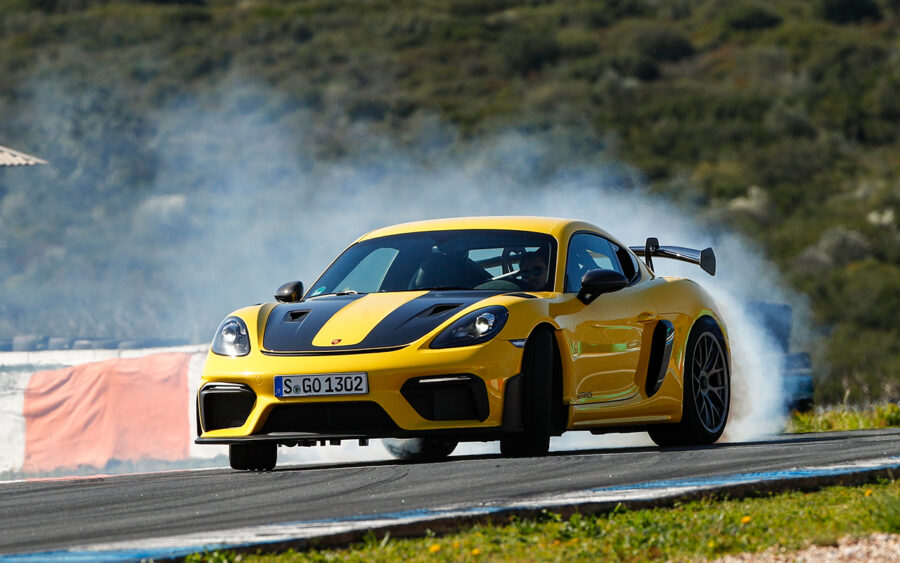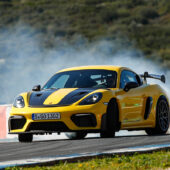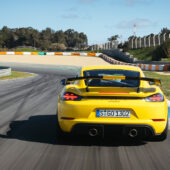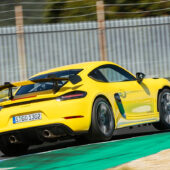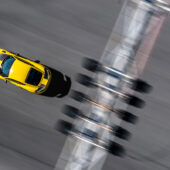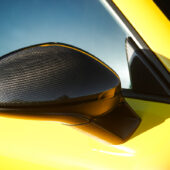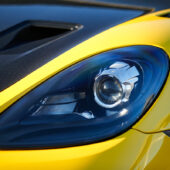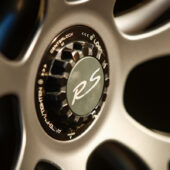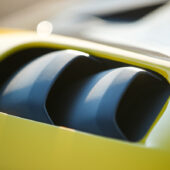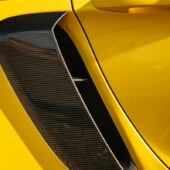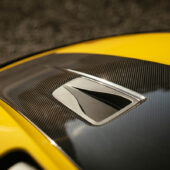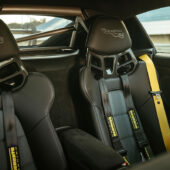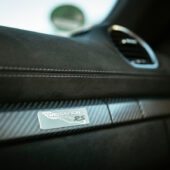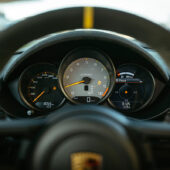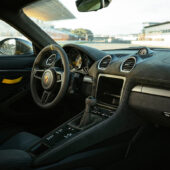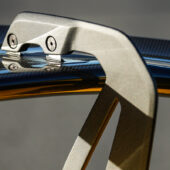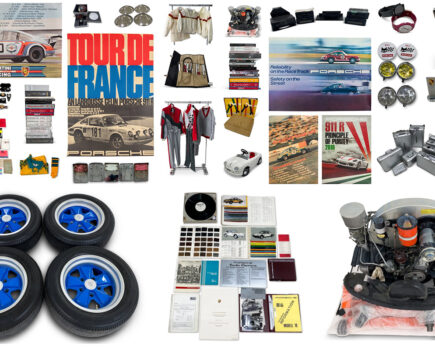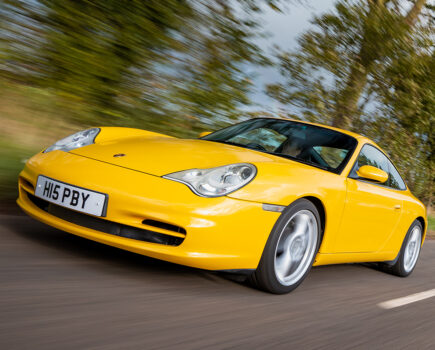Do the considerable talents of the 718 Cayman GT4 RS challenge those of a new 911 GT3? We get behind the wheel to discover more
Words: James Fossdyke
For people like us, the afflicted marque enthusiasts, it’s easy to forget Porsche is essentially a business like any other. It has shareholders to appease, profits to make and new markets to conquer, leaving little room for sentiment. The boardroom is a brutal place, and it gave us a company which now manufactures more SUVs than sports cars. Don’t get me wrong, the massive-selling Macan and Cayenne are brilliant and I’d take either ahead of pretty much any other luxury 4×4, but they’re not the vehicles most people bring to mind when thinking about their dream Porsche.
And yet, while the Stuttgart brand can play the role of ‘hard-nosed car maker’ when it has to, it’s clear petrol runs in the veins of the firm’s calculating board members — for all the sensible Cayenne E-Hybrid moments we’re subjected to, passion projects are seemingly given the green light at Porsche more often than at any other manufacturer. Needless to say, engineers at Weissach set about their business with relish. The 992 GT3 is one example of such a project, and across these pages, you see yet another. It’s the new Cayman GT4 RS, and it’s designed to be the most uncompromising driver’s car in the 718 range.
In essence, it’s an evolution of the Cayman GT4, which was already a fabulous showcase of the 718’s talents, but where the GT4 turned the Cayman up to eleven, the RS version takes it up to fifteen. And then some.
Out goes the GT4’s magical four-litre flat-six, but there’s no need to mourn — Porsche has replaced it with the 992 GT3’s four-litre flat-six. Admittedly, the engine was rotated through 180 degrees and given a new exhaust system to help the unit squeeze into the Cayman shell, resulting in 493bhp, rather than the 503bhp you get from the GT3, but with this power and 332lb-ft of torque, it’s considerably more potent than the 414bhp, 317lb-ft GT4.
And because this is a Porsche, there’s more to the RS model than just a power hike. Rotating the engine brought forward the need for a different gearbox, albeit still a seven-speed double-clutch PDK semi-automatic (there’s no manual option). There’s a handful of other fresh components, too. The quarterlight windows have been replaced with air intakes, for example, while the conventional Cayman’s rear-quarter intakes have been retained and used for engine cooling. Additionally, there are some proud vents in the front wings.
Then there’s the more efficient rear wing, which is similar to that of the new GT3, complete with swan-neck supports. What’s more, Porsche has lowered the entire car by thirty millimetres when compared with a standard Cayman, then added aerodynamically optimised underbody panelling, a rear diffuser and an adjustable front diffuser, plus a new front spoiler lip with flow-around side blades. As a result, the ‘Performance’ mode, which is reserved for use on race tracks, allows the RS to produce approximately twenty-five percent more downforce than the GT4.
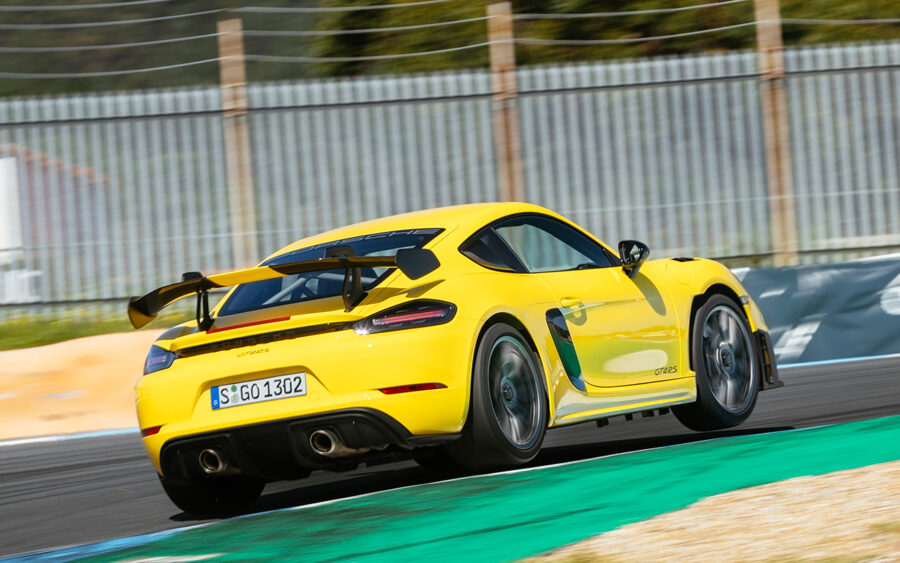
Just as importantly, Porsche’s engineers also put the Cayman on a crash diet, bringing weight down to 1,415kg, equating to a thirty-five kilo drop compared with a GT4 loaded with the same gearbox. What’s more, the RS is five kilos lighter than a GT4 with manual transmission. This weight loss is primarily due to the use of carbon-fibre-reinforced plastic (CFRP) for various parts, including the bonnet and front wings, but Porsche even fitted lightweight carpets and stripped out some of the insulation, as well as fitting a lightweight glass rear window. And, as you’d expect, the company turned to its time-honoured trick of fitting textile door pulls and storage compartment nets in a bid to shave off every supplementary gram it could find.
The unsurprising result of this extra power and weight-shedding is improved straight-line performance. Where the PDK-equipped GT4 will reach 62mph from a standing start in 3.9 seconds, the GT4 RS cuts the same sprint to 3.4 seconds. Top speed is stretched from 188mph to 196mph. In fact, the RS is so fast, it matches the GT3’s dash from zero to 62mph and is only 2mph slower at full chat. The GT4 RS isn’t just designed to go fast in a straight line, though. The chassis is designed for track use, which means the ball joints provide a tighter link between chassis and body. There is also an RS-specific shock absorber set-up at play, complemented by tweaked spring and anti-roll bar rates. Consequently, the GT4 RS development team lapped the Nürburgring Nordschleife (in 20.6km form) in 7:04.511 minutes, a full 23.6 seconds faster than the 718 Cayman GT4 and just nine seconds slower than the 992 GT3.
All of which means we can’t just compare the GT4 RS with the GT4 to find out which is the pick of the Cayman range. No, the RS also has to be compared with the £131,530 GT3, a Porsche £23,000 more expensive. Of course, at £108,370 plus options, the GT4 RS isn’t exactly cheap — especially when the GT4 comes in at ‘just’ £78,750 — but the question of value for money has to be raised.
It becomes especially pertinent when the GT4 RS is, in many ways, more capable than the attention-grabbing 992 GT3. For a kick-off, the 718 is more comfortable. No matter which flavour you choose, the Cayman has always been more pliant than the equivalent 911. The GT4 models continue the trend. Indeed, while the GT4 RS is designed to be the stiffest, most focused 718 yet, it’s little more jarring than a contemporary 911 GTS. Admittedly, I have openly expressed my view the GTS is a little too firm for everyday use, but even Porsche admits the 718 Cayman GT4 RS is a toy for occasional Sunday blasts, not a motorised shopping trolley.
By this standard, the RS ride isn’t bad at all. Of course, Britain’s roads are far from exemplary, and the GT4 RS does suffer over the most uneven surfaces, but it’s tolerable — very firm around town, jolting over speed bumps and potholes, but becoming less problematic as speed builds. Naturally, the stiffness of the car’s construction means it will occasionally skip over big bumps, which can cause a moment of slip from those 295/30 ZR20 rear tyres, and it’s slightly less composed than the GT4, which is stunningly comfortable considering its performance. Counter-intuitively, opting for the firmer damper setting makes the car feel a little less jittery at speed, although it won’t help much when you’re crawling around town.
On a smooth road or track, however, the GT4 RS’s firmer chassis pays dividends. There’s no knocking the standard GT4 here — it’s a fabulous car and arguably the more rounded option — but when corners come thick and fast, the RS feels that little bit sharper and more responsive. The stiffer suspension settings drag the car’s body around that bit more rapidly. This isn’t video-game handling, but there’s plenty of feel.

Not only are the bumps transmitted through the ultra-supportive bucket seats, but also through the steering wheel. Porsche steering has long been first class, but the GT4 RS feels really alive. Bumps translate into small shudders and the front wheels tell you exactly how much grip they have. And because the steering is slightly heavier than that of the GT4, it’s marginally easier to be smooth and progressive with your inputs.
What really makes the GT4 RS more impressive than the GT3, however, is its balance. With the engine in the middle, the car feels less tail-heavy than the 911. And, although it’s only twenty kilos lighter, the Cayman feels a little more agile, as well as less twitchy under power. It doesn’t have the tail-out drifting prowess of the GT3, although it will slide if provoked, but it corners even more beautifully and feels more natural. The body doesn’t really roll much in bends, and it’s certainly more planted than the standard GT4, but there’s a little more feeling of weight transfer than in the GT3, which means the GT4 RS is more predictable and less highly strung.
This isn’t all it has going for it. The engine may be a little less powerful than that of the GT3 (though we’re looking forward to seeing the inevitable power upgrades from Porsche tuners), but it’s just as visceral. Those intakes on the sides provide a new aspect to the flat-six noise, with a whistle by your ear as the engine gulps in air. The whole car feels raw and unfiltered, with the engine popping and banging its way through the lower rev range and screaming all the way to its 9,000rpm redline. The sound matches the power delivery, which is brutal and uncompromising. The standard GT4 is mighty fast, of course, but it has to climb the rev counter before it really punches you in the back. The GT4 RS is more instantaneous, flinging itself toward the next bend every time you twitch your right foot. And the seven-speed automatic gearbox is a doozy, snapping its way up and down the ratios and eliciting exactly the right response from those twin exhausts.
This new Porsche has its problems, though. The interior is based on the standard 718 cabin, albeit with Race-Tex material on the button-free steering wheel and the gear selector. There’s carbon-weave trim, too, and full bucket seats are included as standard, although eighteen-way adaptive sports seats are a no-cost option. But for all this, the 718 Cayman is essentially six years old and aspects of the cabin are showing their age. The infotainment system, for example, is a little clunky, and the digital displays in the instrument cluster are a bit old-school, especially alongside the more modern displays in the current 911 and Cayenne.
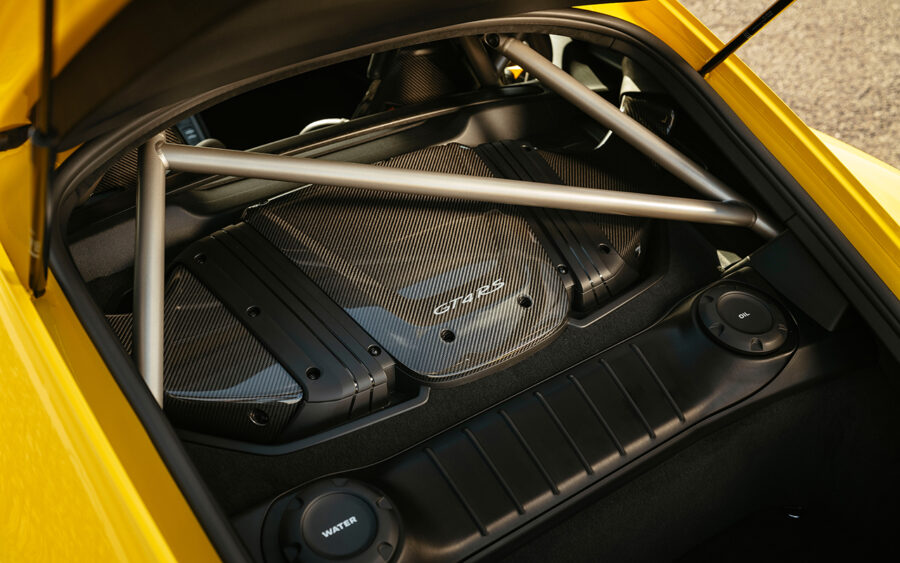
Porsche 718 Cayman GT4 RS: our verdict
When it comes to the question of value, that £108,370 starting price puts the GT4 RS in a strange place. It’s considerably more expensive than the standard GT4, which is a hugely impressive piece of kit, and the optional Weissach performance package only adds to the price gulf, adding a carbon-weave finish to the front luggage compartment lid, process air intakes, cooling air intakes, airbox cover, door mirror trims and rear wing.
The package also includes a titanium roll cage and titanium tailpipes designed to look similar to those of the new(ish) 935. Inside, the upper dashboard is trimmed in Race-Tex, while there’s Porsche script on the rear window. Buyers also have the opportunity to choose twenty-inch forged magnesium wheels in place of the standard twenty-inch forged aluminium rims. This option alone costs £11,186, taking the price of your GT4 RS to around £120,000. At this point, the GT4 RS is a massive £40,000 more than a basic GT4. That’s a lot of money.
In fact, if you’re going to use this car every day, then the standard GT4 is going to be more pliant around town and much better value, while only being slightly more compromised on a good road. Then again, if you want the ultimate engine note, handling and performance for an hour-long Sunday morning blast on your favourite ribbon of asphalt, this is the best Porsche you can buy, and I’m including the 992 GT3 in my calculations.
On a track, the GT3 is going to be faster and more fun, but, taking into consideration the GT4 RS’s lower price tag, greater balance and more supple ride, the Cayman provides more value for money. For those buying a new Porsche sports coupe for high days and holidays, this is the very best you can get.

